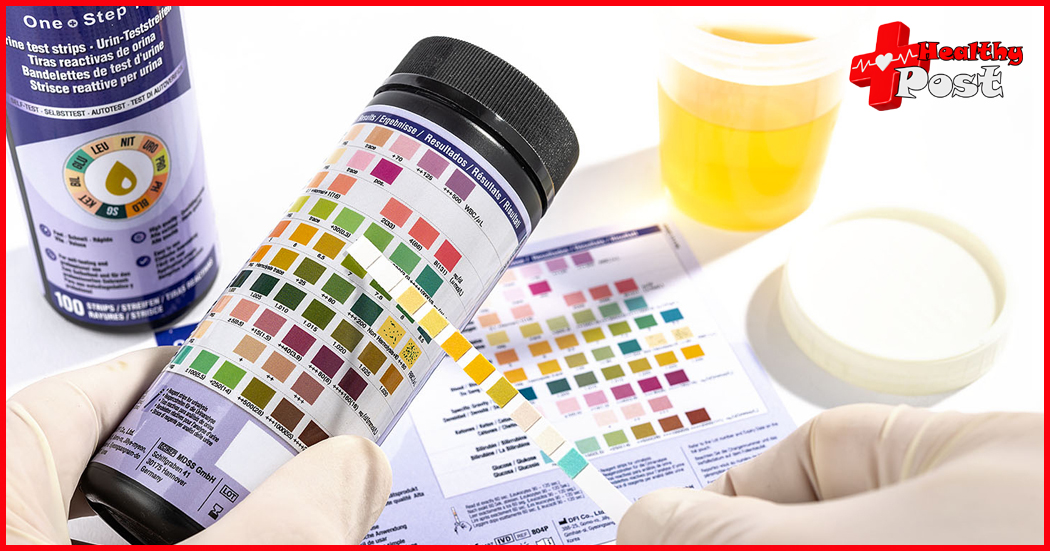
Are urine test strips accurate?
If you have obesity, low back pain, edema, frequent urination, urgent urination, painful urination, foamy urine, turbid urine, etc., or have been diagnosed with high blood pressure, diabetes, kidney disease, or have been taking medicine for a long time, and you are worried that something is wrong with your body, but you cannot go to the hospital for examination in time, what to do? Now, you can test your urine at home. Through early detection and timely treatment of diseases, the occurrence of major diseases can be prevented or reversed. In this article you can get knowledge about urine test strips and how to use it.

1. What is the self-examination urine test?
As shown in the picture above, a citizen self-examined at home and found that his urine sugar was 4+. He had no symptoms except obesity before. Later, he went to the hospital for a re-examination and was diagnos with diabetes. Due to early detection, through diet and medication adjustment, fasting blood sugar was soon controlled from 10+ to less than 6. So, under what circumstances do you need to self-test your urine?
(1) Kidney disease monitoring
People who have symptoms such as foamy urine, thick urine, turbid urine, low back pain, edema, etc., or people with chronic diseases such as high blood pressure, or those who take medicine for a long time, need to be alert to kidney damage and pay attention to protein in the urine. Persistent proteinuria should be consider pathological. For confirmed kidney diseases, such as acute and chronic nephritis, kidney stones, etc., changes in urinary protein can be continuously monitor, and indicators of urinary occult blood can also be monitor at the same time.
(2) Obesity and diabetes monitoring
Obesity, polyphagia, and unexplained weight loss require urine glucose testing as soon as possible. If you have been diagnose with diabetes, you need to prevent early diabetic kidney damage. If kidney damage can be detect in time, it can be treat as early as possible to prevent kidney failure and uremia. People with diabetes can use 4-item urine test strips to monitor 4 indicators of urine glucose, microalbumin, ascorbic acid, and creatinine. If your blood sugar continues to fail to drop, diabetics need to increase urinary ketone body monitoring to prevent ketoacidosis.
(3) Urinary tract infection monitoring
If you have symptoms such as frequent urination, urgent urination, and painful urination, you can use test strips to measure two indicators: white blood cells and nitrite. If a urinary tract infection has been diagnose, in addition to continuous monitoring of changes in white blood cells and nitrite, urine occult blood indicators can also be monitor at the same time.
(4) Weight loss and monitoring of pregnant women
Urinary ketone bodies are intermediate products of fat metabolism. People who lose weight, such as after dieting and exercising, can measure ketone bodies in their urine to determine whether there is fat metabolism. For weight loss, diabetes and pregnant women, it is recommend to monitor urinary ketones.
(5) Regular self-examination
If you don’t have particularly obvious symptoms and want to self-test your health regularly. Use 14-item urine test strips, which are individually package and ready to use to avoid expiration after opening the bottle (usually the validity period is 1 month after opening the bottle) . For people who are obese, have underlying diseases, or have a family history of the four high blood pressures (hyperglycemia, hypertension, hyperlipidemia, and hyperuric acid), early and regular monitoring is recommend. If you don’t know how to choose the specifications, just use 14-item urine comprehensive screening.
2. Is the urine test paper dry chemical method accurate?
The chemical components in urine can change the color of urine test strips. Usually the color depth is directly proportional to the concentration of the corresponding substance in urine. Therefore, urine test strips can not only indicate whether urine contains certain components, but also indicate the content through the color depth.
For hospital testing, a urine dry chemical analyzer is use to automatically interpret the color of the test paper after the reaction. Home self-test is just a manual visual test of paper color. The test strips used by both are the same.
As shown below, the 14-item urine test strip self-test items and the hospital’s fully automatic urine dry chemistry analyzer test report chart are for reference.
3. How to use urine test strips?
Urine self-examination allows you to collect urine at any time, without the need for needles, painless, non-invasive, easy to operate, and suitable for long-term and continuous health monitoring. It only takes about 1 minute to interpret the results. It really takes just one extra look when urinating to get a urine test. The specific operation is three steps:
Step one: Take urine. Use a clean container, such as a urine cup, disposable water cup, etc., to collect urine from the midsection.
Step 2: Put the test strip. Completely immerse the urinalysis test strip in the urine for 1-2 seconds, take it out, place it on absorbent paper to remove excess urine, and then lay it flat.
Step 3: Compare the color cards and interpret the results.


One thought on “Are urine test strips accurate?”